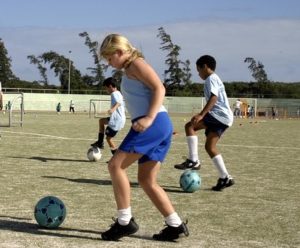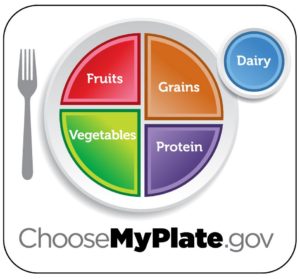 It’s September and that means school is back in session and fall sports are underway. Between the energy demands of normal growth and added physical activity, it may seem as though your child has a bottomless pit for a stomach. As a busy parent, it can be tempting to feed your hungry child with whatever is on hand. However, strategically fueling your active child may better serve their nutritional needs for mental and physical performance, and growth.
It’s September and that means school is back in session and fall sports are underway. Between the energy demands of normal growth and added physical activity, it may seem as though your child has a bottomless pit for a stomach. As a busy parent, it can be tempting to feed your hungry child with whatever is on hand. However, strategically fueling your active child may better serve their nutritional needs for mental and physical performance, and growth.
Nutritional Needs
Nutritional support starts with three meals a day, plus snacks as needed. Eating from a variety of food groups helps ensure adequate energy intake from proteins, carbohydrates and fats. Additionally, a varied diet helps provide enough vitamins and minerals for optimal growth. In order to create healthy meals, incorporate the following foods.
Proteins
- Meat, poultry, fish
- Nuts and seeds
- Beans
- Dairy
- Eggs
Carbohydrates
- Grains (pasta, rice, bread, oats, quinoa, barley)
- Beans
- Dairy
- Fruit
- Starchy vegetables (potatoes, corn, winter squash, peas). Non-starchy vegetables (leafy greens, broccoli, carrots) are low in calories and carbs, but a great source of vitamins and minerals.
Fats (use minimally)
- Oils – olive, vegetable, coconut, lard, butter
- Nuts and seeds
- Avocados and olives
- Animal products including meat, poultry, fish and dairy
Nutritional Strategies for Active Youth
An active child has increased energy needs. Fuel up before games and practice with healthy carbohydrates to provide glucose for muscles and brain power. However, refueling after activities with carbs and protein helps replenish and recover. With a little pre-planning, you can help your child fulfill nutritional needs, which vary based on age and sex of child, plus duration and intensity of sport. Start with these guidelines for fueling your active child.
- Before sports: Eat a meal 2 – 4 hours in advance. Breakfast is especially important.
- Right before or during sports: Eat a small amount of carbohydrates.
- 1/2 English muffin
- 3 – 2 1/2 inch square graham crackers
- 1/2 cup beans, corn or peas
- 1 cup low-fat milk or 1/2 cup chocolate milk
- 1 small banana, apple or orange
- 2 tablespoons dried fruit
- 15 grapes
- 1 1/4 cup strawberries
- Within 30 minutes after activity: Eat a combination snack made from carbs and protein. An additional snack may be needed 1 – 2 hours later. To improve muscle repair and recovery, consume proteins rich in the amino acid leucine, as seen in the examples below.

- 1 small apple and 1 tablespoon almond butter
- 1 ounce of cheddar cheese and 10 whole grain crackers
- 1 cup chocolate milk
- A hard boiled egg and 1 ounce of almonds
- Hydration
- 13 – 20 ounces water 2 – 3 hours before event
- 5 – 10 ounces water every 15 minutes during activity
- As needed afterwards
- Hydrating with sports drinks should be reserved for physical activity lasting longer than 60 minutes or in hot, humid weather.


Great post!